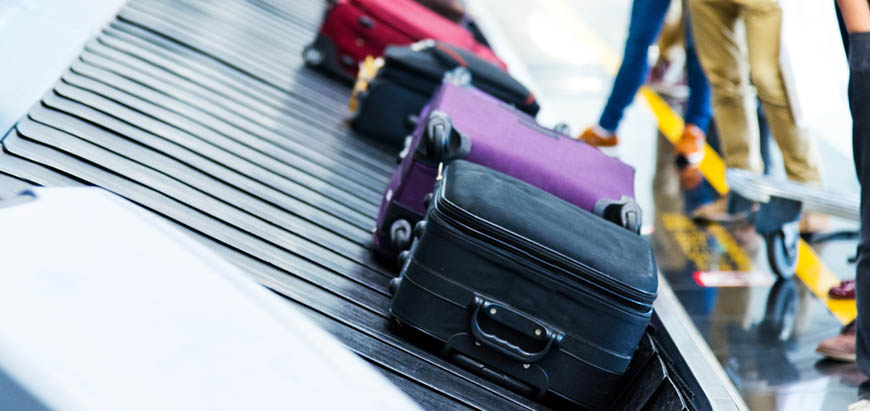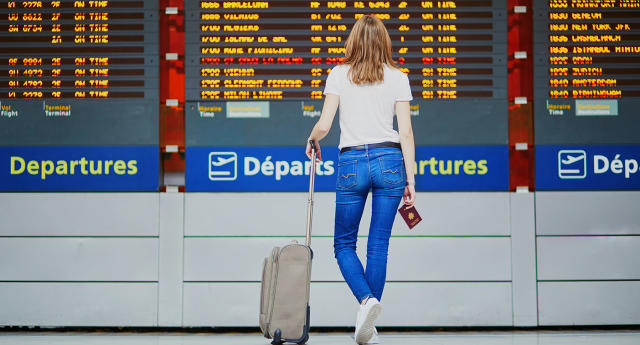Traveling by air can be a stressful experience, especially when it comes to figuring out how early you should arrive at the airport. Whether you’re a frequent flyer or an occasional traveler, understanding the timing can help ensure a smooth and hassle-free journey. In this comprehensive guide, we will explore everything you need to know about airport arrival times aka “How Early Should I Arrive at the Airport?”, from general recommendations to specific considerations based on various factors.
Arriving early at the airport is crucial to ensuring a smooth and stress-free travel experience. It allows you ample time to go through security checks, check-in your baggage, and handle any unexpected delays. Being early also provides a buffer for traffic, parking, and other logistical challenges that could otherwise cause you to miss your flight.
Overview of Factors Influencing Arrival Time
Several factors influence how early you should arrive at the airport. These include the type of flight (domestic or international), the airline’s specific guidelines, the size and layout of the airport, and personal factors such as traveling with children or having mobility issues. Understanding these factors can help you plan better and avoid last-minute rushes.
Domestic vs. International Flights
For domestic flights, it is generally recommended to arrive at the airport at least 1.5 to 2 hours before departure. For international flights, you should aim to be at the airport at least 2 to 3 hours in advance. These recommendations are based on the time needed for check-in, security screening, and boarding.
- Airline Guidelines
Different airlines have their own guidelines for how early passengers should arrive. It is important to check with your specific airline for their recommendations, as these can vary. Some airlines may require you to be at the gate a certain amount of time before departure, while others might have stricter check-in deadlines.
- Airport Size and Layout
The size and layout of the airport can significantly impact how early you need to arrive. Larger airports with multiple terminals may require more time to navigate, while smaller airports may allow for a quicker check-in and security process. Familiarizing yourself with the airport’s layout ahead of time can save you valuable minutes on the day of your flight.
Specific Considerations
- Security Checkpoints
Security checkpoints are often the most time-consuming part of the airport process. The time it takes to get through security can vary widely depending on the airport, the time of day, and the number of travelers. Arriving early gives you the flexibility to handle any unexpected delays at security.
- Baggage Check-in
If you have checked baggage, you need to account for the time it takes to drop off your bags. This process can take longer during peak travel times or at busy airports. Make sure to check the baggage policies of your airline and allow extra time for this step.

- Boarding Procedures
Boarding procedures can also vary by airline and flight. Some airlines board passengers by zones or groups, while others may have a more open boarding process. Knowing the boarding procedure in advance can help you plan your arrival time more accurately.
- Immigration and Customs
For international flights, immigration and customs can add significant time to your airport experience. Arriving early ensures you have enough time to go through these processes without the stress of potentially missing your flight.
Time of Day and Seasonality
- Peak Travel Times
Peak travel times, such as early morning and late afternoon, often see higher passenger volumes, leading to longer lines at check-in and security. During these times, it is advisable to arrive at the airport even earlier than the general recommendations.
- Off-Peak Travel Times
Traveling during off-peak times, such as mid-morning or late evening, can result in shorter lines and faster processing times. However, it is still important to arrive early to account for any unforeseen delays.
- Holiday and Seasonal Variations
Holidays and peak travel seasons, such as summer vacations and winter holidays, typically see increased airport traffic. During these periods, it is wise to add extra time to your airport arrival to accommodate the larger crowds and longer wait times.
Traveler Profile
- Business Travelers
Business travelers often need to navigate the airport quickly to stick to tight schedules. Utilizing services like TSA PreCheck or Clear can expedite the security process, allowing business travelers to arrive closer to their flight time without risking delays.
- Families with Children
Families traveling with children should plan to arrive earlier than the general recommendations. Extra time is needed for activities such as checking strollers, managing carry-on items, and getting through security with young children.
- Elderly Travelers
Elderly travelers may require additional time to move through the airport, especially if they have mobility issues or need assistance. Arriving early ensures they have ample time to get to their gate without feeling rushed.
- Travelers with Disabilities
Travelers with disabilities should arrive at the airport early to allow for any special accommodations or assistance they may need. Many airports offer services to help travelers with disabilities navigate the airport more easily, but these can take additional time to arrange.

Additional Factors
- Transportation to the Airport
Consider the time it takes to get to the airport, whether by car, public transportation, or ride-sharing services. Traffic conditions, public transit schedules, and the reliability of your chosen mode of transport can all impact your arrival time.
- Parking and Shuttle Services
If you are driving to the airport, factor in the time needed to find parking and take a shuttle to the terminal. Airport parking lots can be busy, especially during peak travel times, so allow extra time for this step.
- Airport Services and Amenities
Many travelers like to take advantage of airport services and amenities such as lounges, dining, and shopping. Arriving early gives you the opportunity to enjoy these offerings without feeling rushed.
- Travel Insurance Considerations
Having travel insurance can provide peace of mind in case of delays or missed flights. Understanding your policy and its coverage for such scenarios can help you plan your arrival time more effectively.
Technology and Tools
- Online Check-in
Most airlines offer online check-in, which can save time at the airport. Completing this step before you arrive allows you to go straight to security if you have no checked baggage.
- Mobile Apps and Alerts
Airline mobile apps and airport alert services can provide real-time updates on flight status, gate changes, and security wait times. Utilizing these tools can help you better plan your arrival time.
- TSA PreCheck and Global Entry
Programs like TSA PreCheck and Global Entry expedite the security and customs process, allowing you to arrive at the airport closer to your departure time. Enrolling in these programs can be especially beneficial for frequent travelers.
Case Studies and Personal Stories
- Frequent Flyers’ Experiences
Frequent flyers often develop their own strategies for arriving at the airport on time. Personal stories from these travelers can provide valuable insights and tips for others.
- First-Time Travelers’ Perspectives
First-time travelers may have different experiences and challenges when it comes to airport arrival times. Hearing their perspectives can highlight the importance of preparation and arriving early.
- Real-Life Implications of Late Arrivals
Real-life stories of missed flights and the consequences of arriving late at the airport can serve as cautionary tales and underscore the importance of timely arrival.
FAQs
For domestic flights, it is generally recommended to arrive at the airport at least 1.5 to 2 hours before departure.
For international flights, you should aim to arrive at the airport at least 2 to 3 hours in advance.
Yes, larger airports with multiple terminals may require more time to navigate, so you should arrive earlier compared to smaller airports.
Travelers with children or mobility issues should plan to arrive earlier than the general recommendations to allow extra time for check-in, security, and boarding processes.
Yes, using online check-in, mobile apps for real-time updates, and programs like TSA PreCheck can save significant time and streamline your airport experience.
If you’re running late, contact your airline immediately to inform them of your situation. They may be able to assist you in expediting your check-in and security process.
Conclusion
Arriving early at the airport is essential for a smooth travel experience. The general rule of thumb is to arrive 1.5 to 2 hours before domestic flights and 2 to 3 hours before international flights. Factors such as airline guidelines, airport size, and personal circumstances can influence this timing.
To ensure a stress-free airport experience, always check your airline’s specific guidelines, consider the size and layout of the airport, and factor in additional time for security, baggage check-in, and other processes. Utilizing technology like online check-in and mobile alerts, and enrolling in programs like TSA PreCheck, can further streamline your journey.
